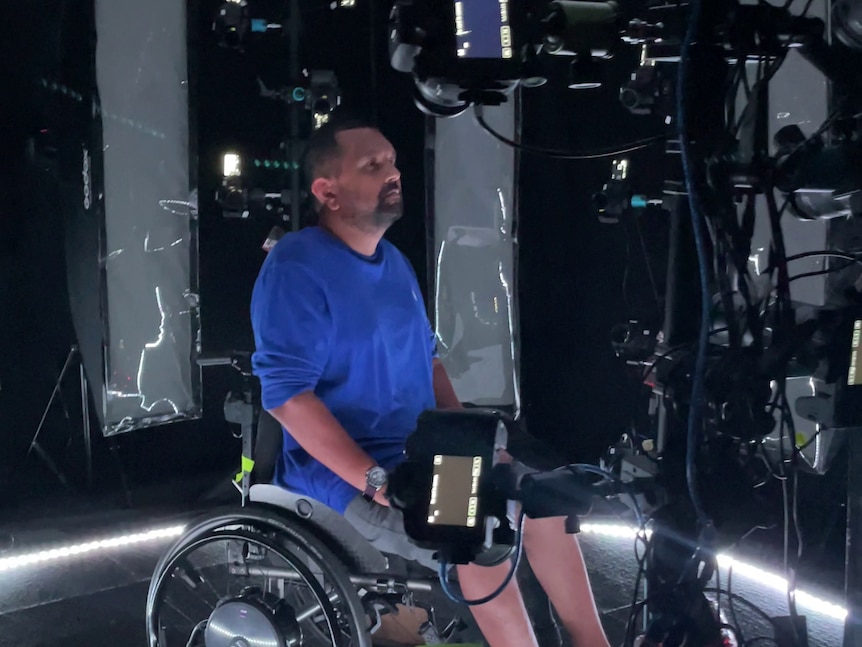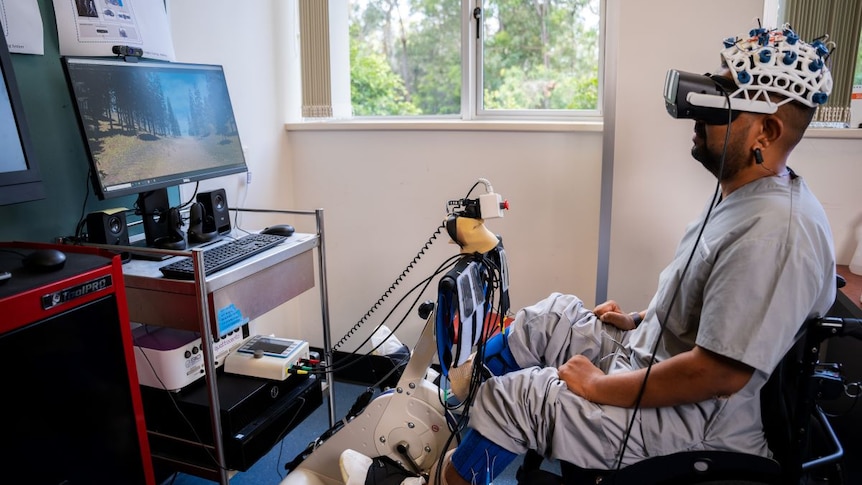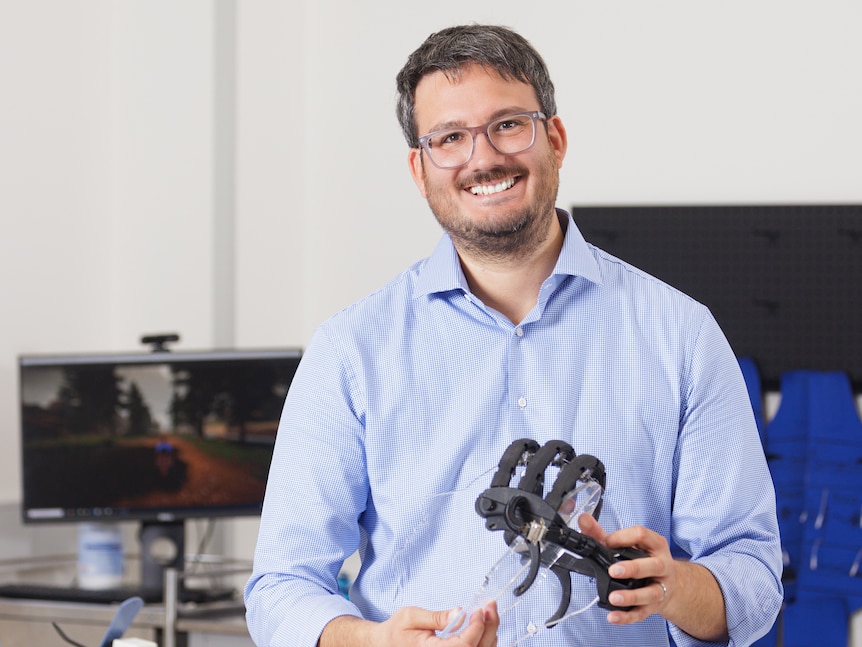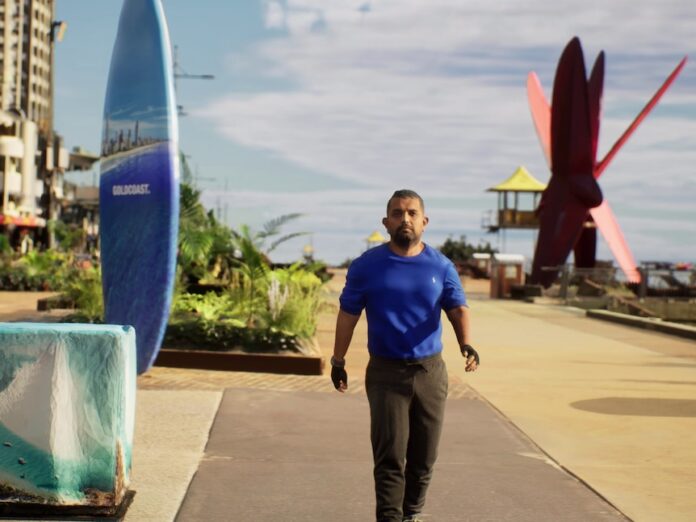Dinesh Palipana, a Gold Coast doctor paralyzed in a car accident, has found renewed hope through BioSpine’s thought-controlled virtual reality simulation, allowing him and others with spinal cord injuries to experience the sensation of walking again.
In a groundbreaking development, BioSpine’s thought-controlled virtual reality technology is revolutionizing the way paralyzed patients experience mobility, offering a ray of hope to those with spinal cord injuries. Co-lead researcher Dr. Dinesh Palipana, himself a victim of paralysis following a car accident, has been at the forefront of this transformative project, driven by the desire to regain lost mobility.
Dr. Palipana’s journey from tragedy to triumph exemplifies the resilience of the human spirit. Since the fateful evening in 2010 when his life changed forever, he has dedicated himself to pioneering research aimed at restoring movement and independence to individuals with spinal cord injuries. As a co-lead researcher on Project BioSpine, Dr. Palipana has played a pivotal role in developing a thought-controlled virtual reality simulation that offers paralyzed patients the extraordinary sensation of walking once more.

The innovative technology combines virtual reality with electrical muscle stimulation and drug therapy, creating a comprehensive approach to spinal cord injury rehabilitation. Through precise measurement of brain activity via electroencephalogram (EEG), patients are able to control their virtual movements, while electrical pulses stimulate relevant muscles, mimicking real-world actions.

Dr. Claudio Pizzolato, a researcher at Griffith University’s Centre for Biomedical and Rehabilitation Engineering, describes the technology as reminiscent of science fiction, with electrodes detecting brain signals to create real-time simulations of movement. This groundbreaking approach has yielded promising results, with patients demonstrating improvements in muscle and bone density, and some even regaining sensation and voluntary movement below the spinal injury site.

The potential applications of this technology extend beyond spinal cord injuries, offering hope to individuals with conditions such as cerebral palsy and stroke. Moreover, thought-controlled virtual reality holds promise for gaming and social media integration, hinting at a future where technology transcends boundaries to enrich lives in unimaginable ways.
For Dr. Palipana, the ability to walk again, even in a virtual environment, is a source of profound joy and gratitude. While his physical journey toward mobility continues, he remains steadfast in his determination to overcome obstacles and inspire others facing similar challenges. In the face of adversity, Dr. Palipana’s unwavering optimism serves as a beacon of hope, reminding us all of the resilience of the human spirit and the boundless possibilities of scientific innovation.


